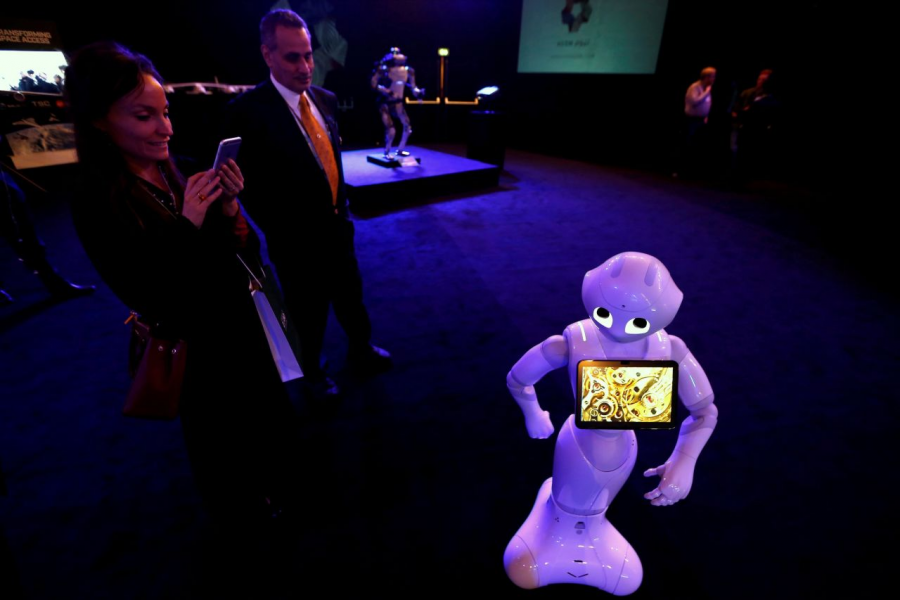An overview of Saudi Arabia’s proposed, futuristic utopia
April 1, 2021
Imagine: Flying from anywhere in the EU to a desert oasis within the barren wastelands of the northwestern Arabian coast. Step off the plane onto a massive airfield built to receive hundreds of flights a day, move through an airport that dynamically scans for threats, and out onto The Line: a 170km long “city of the future”. No car rental required: The Line has no conventional streets. Instead, enter ultra-fast subway systems to your stop, and walk to your chosen place of residence. Shade yourself from the heat watching live sports and entertainment, cool off in a scuba-diving session or with some water sports, and enjoy the nightlife watching robot cage matches under an artificial moon. Crown Prince Mohammed bin Salman (MBS) has a vision of a bright future for Saudi Arabia: towering skyscrapers looming over a city of the future, six times the size of New York City and filled to the brim with futuristic technologies. There’s only one problem: The city in question, The Line within Neom, does not exist. This obviously poses an interesting dynamic for Saudi Arabia: how does an arid, wealthy country go about creating the largest city on Earth?
Neom has been pitched to investors as a sustainable, eco-friendly technological paradise and a massive tourist attraction. So what are the purported advantages of creating a metropolis in northwestern Saui Arabia? It would be within a 4 hours’ flight of almost every city in Europe and the Middle East, as well as North Africa. Its position on the coastline would allow large ports as well as easy access to the Suez Canal, the only easy sea route from Europe to Asia. Theoretically, its position on the coastline would offer power sources and water sources, both of which are included in the current plans for the city, however the technology in real life has not caught up to the technology planned for (and required for) Neom. The selling points of the city do make it quite attractive to potential investors, especially since Saudi Arabia possesses massive sovereign reserves of capital with which to fund public programs. Predictive technologies will monitor the health and well being of all citizens of Neom, while the city sits atop massive layers of irrigation, transportation and service infrastructure. Many core elements of the day to day infrastructure will be handled by artificial intelligence and autonomous systems, creating the first “Smart City”. Neom will run on its own legal system and lawset that is independent from mainland Saudi Arabia, purportedly allowing alcohol and adopting less archaic social policies. Crown Prince MBS, however, has even loftier goals for the technologies and projects within Neom.
According to a multiple thousand page report by the Mckinsey corporation, a consulting agency brought on board to help craft the image of a potential Neom, MBS plans to include some rather ambitious inventions that do not yet exist. Such technologies within The Line, such as flying taxis, cloud seeding, robot maids, dinosaur robots, robot martial arts cage matches, hologram schoolteachers and a giant artificial moon will all be available for public enjoyment. Some technologies, like glow in the dark sand and drone security, already exist but are not yet cheap or available enough to be practical. Other staples of the city, like 5-star restaurants and state of the art medical facilities, would require time and expensive personnel to pull off correctly. The construction of the city has not yet begun, and details pertaining to the nature of its 3-layer infrastructure have been very sparse, meaning that the public knows next to nothing about the nature of the city or how it will be constructed outside of a prominent promotional image. The disconnect between what MBS and his consultants have greenlit set against what investors and the royal government are promising is a matter of “conflict”, while Neom’s official position is that consultants have been very “valuable”.
The creation of Neom will require over 500 billion USD for preliminary costs of construction, with amounts expected to exceed 12 figures. Some of this money will be used to relocate the current inhabitants of this region of Saudi Arabia, who number 20,000 strong. This relocation is not optional and must be undergone by 2022. Controversy surrounding the relocation and nonexisten technologies are not all the Crown Prince has to worry about, however: the 2017 murder of Jamal Khashoggi by the royal government and the recent murder of a Saudi land rights activist have made potential foreign partnerships scarce. The damage done to Neom’s future after the Khashoggi murder may prove fatal after a recent report from the CIA that confirms MBS ordered the killing of dissident journalist Khashoggi, confirming the suspicions of the international community. With technologies not manifesting, money continually trickling out, and poor press and public reception, the fate of Neom remains uncertain.



